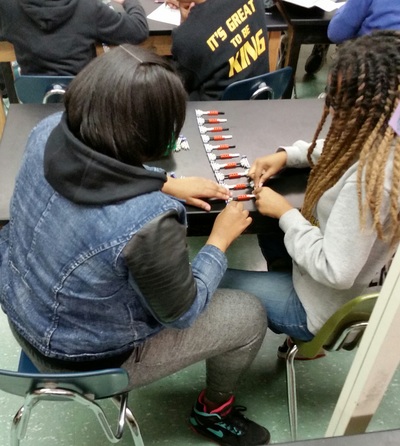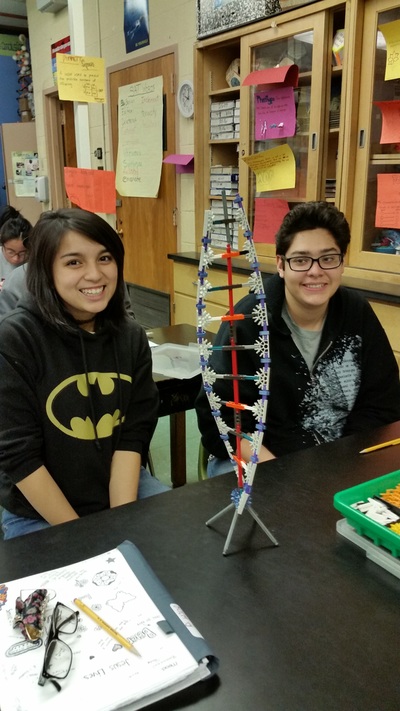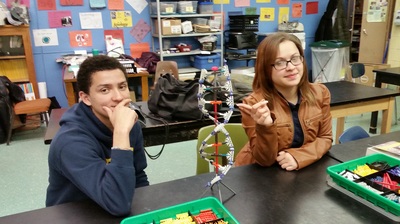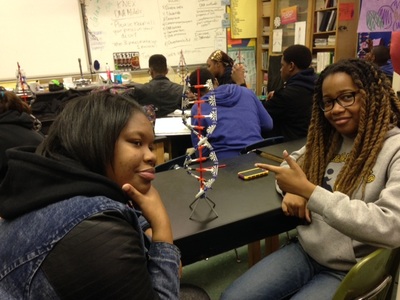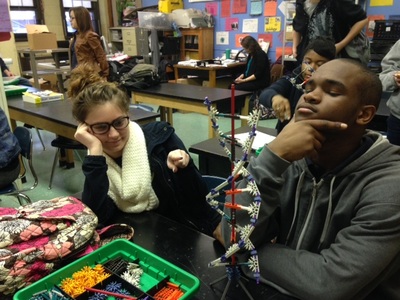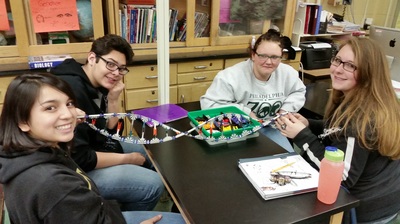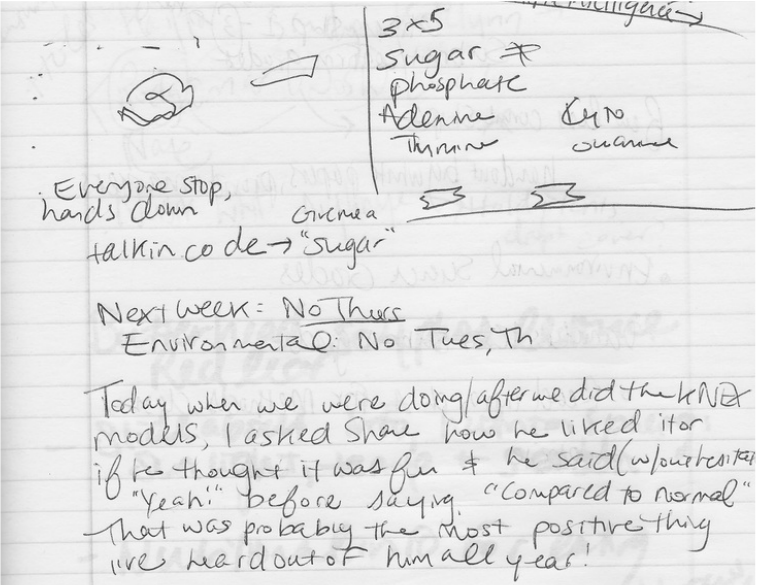|
Valerie Metzler's Inquiry of applied science learning |
Dna modeling with k'nex

In this lesson, students worked in pairs to create models of DNA using K'NEX. Students had prior knowledge of nucleotides as the building blocks of DNA and knew about the double helix structure of DNA. As students constructed their models, they were informed of DNA's anti-parallel sides and had the opportunity to review their knowledge of the structure of DNA, which allowed me to assess the students' knowledge. I was impressed to see that most students were attentive to my instructions and worked quietly with their partners to assemble the DNA structure.
Interestingly, seven out of twenty three students (30%) reported having the most fun learning from the DNA modeling activity and seven out of twenty three reported learning the most from the DNA modeling activity, making a total of eleven out of twenty three (48%) who either said this activity was the most fun or most helpful for learning the content (click here to see the survey). This activity seemed to be memorable for many students, which supports my hypothesis about applied learning, and yet I think it could still be improved to better connect with and explain the content.
It would be beneficial to give each student a 3x5 card on which to write each K’NEX part and the component of DNA it represents. This information could also be reinforced using a worksheet for students to complete at home. These possibilities support Vavra et al.’s (2011) dual-coding theory (DCT), which highlights the importance of using visual and linguistic information to “enhance learning and understanding” (23). In the future, I will also use the DNA models as we continue to learn about DNA replication, transcription to mRNA, and translation to proteins, which would provide a consistent and familiar model of the molecule for the class to reference and manipulate. In addition, this would be an opportune time to assign students to create a video of DNA replication or transcription using their 3-D DNA models.
Interestingly, seven out of twenty three students (30%) reported having the most fun learning from the DNA modeling activity and seven out of twenty three reported learning the most from the DNA modeling activity, making a total of eleven out of twenty three (48%) who either said this activity was the most fun or most helpful for learning the content (click here to see the survey). This activity seemed to be memorable for many students, which supports my hypothesis about applied learning, and yet I think it could still be improved to better connect with and explain the content.
It would be beneficial to give each student a 3x5 card on which to write each K’NEX part and the component of DNA it represents. This information could also be reinforced using a worksheet for students to complete at home. These possibilities support Vavra et al.’s (2011) dual-coding theory (DCT), which highlights the importance of using visual and linguistic information to “enhance learning and understanding” (23). In the future, I will also use the DNA models as we continue to learn about DNA replication, transcription to mRNA, and translation to proteins, which would provide a consistent and familiar model of the molecule for the class to reference and manipulate. In addition, this would be an opportune time to assign students to create a video of DNA replication or transcription using their 3-D DNA models.
Above: Students strike their best "Watson & Crick poses" with the DNA models they created.
Below: Observation of student's response from the DNA K'NEX modeling day, April 9, 2015.
Below: Observation of student's response from the DNA K'NEX modeling day, April 9, 2015.
